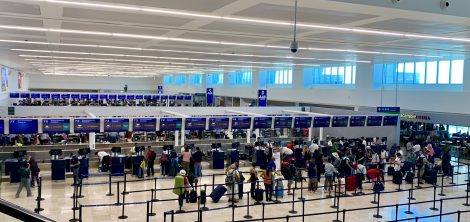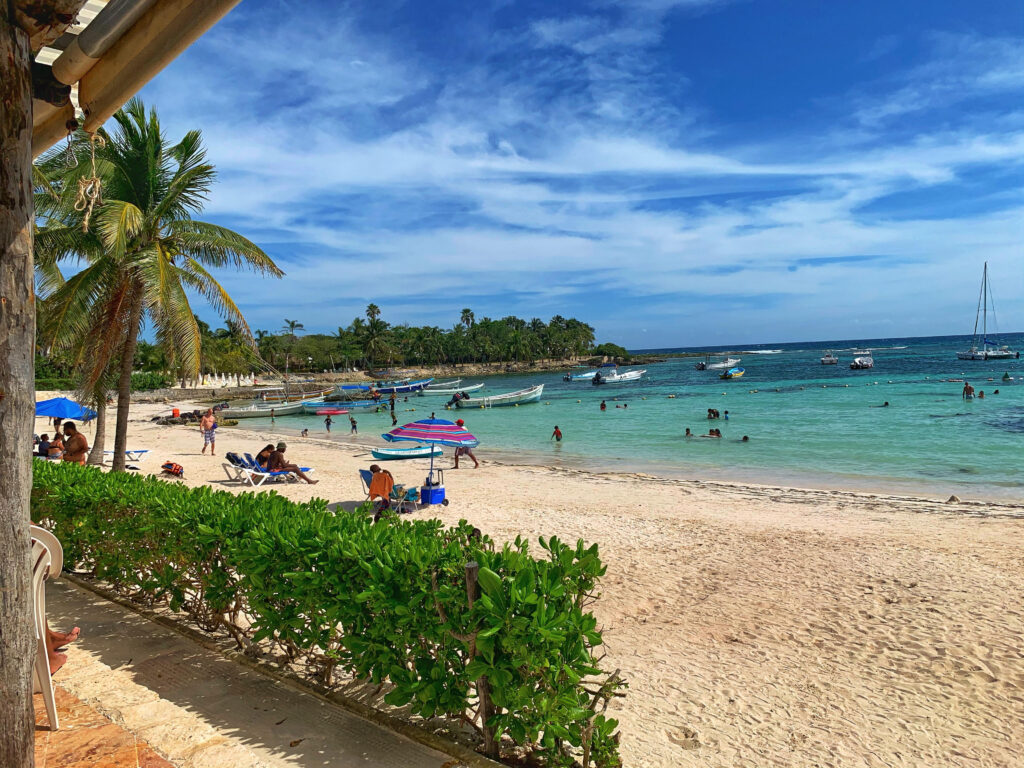
After a weak first half of 2021 globally, international tourism rebounded during the Northern Hemisphere summer season, boosting results for the third quarter of the year. In the third quarter of 2021 tourism rose 58% over the first two quarters of 2021. Mexico was one of the destinations with the most visitors.
We certainly have felt the growing tourism numbers here in the Riviera Maya as well as other popular touristic destinations in Mexico. Mexico technically never closed its borders (for flights). The Riviera Maya and other popular tourist destinations like Cabo San Lucas and Puerto Vallarta were some of the first to really start welcoming back tourism in 2020. The numbers of those coming to Mexico have risen into 2021 and has especially risen in the last quarter of the year.
Many have noticed it harder to find rentals and prices for short to long term rentals have jumped, in part because of demand. We have been saying for about 5 months now that if you are planning a trip to Mexico from November to March, book ahead! Many hotels are fully booked. Even when it looks like a lot of hotels are available online, this often is, the less desirable hotels or rooms.
Why is Mexico bouncing back faster than some other countries?
Mexico and the Riviera Maya have been a popular destination for many from the United States, Canada and Europe. All of these areas have been at the forefront of vaccinations, giving confidence to travelers. Mexico has also been working on vaccinating the population. As of the end of November 2021, Mexico has fully vaccinated 65 million of its residents, which is 50.04%. Another 12 million have received at least one dose.
Several other factors to the rise in tourism to Mexico are:
- The stimulus checks given to citizens in other countries that gave people extra spending cash. Many used the stimulus to go on a trip after skipping a year of travel.
- People’s ability to work online and remotely has opened up the chance to many to come to Mexico. Digital nomads have taken a large portion of longer term rentals in places like Tulum, Playa Del Carmen and Merida.
- While some of the countries visited by people from Europe, Canada and the United States remained closed or with more restrictions, many started to explore options in Mexico.
- As people feel more confident about travel, we are entering winter in the northern hemisphere. The Riviera Maya offers year round summer weather, so this further attracts people to the region.
- Mexico has worked hard to install safety standards. No only have these helped some feel better about travel to the area, it had mobilized the tourism sector to be way ahead of some countries.
How tourism is faring across the globe
According to the newest edition of the UNWTO World Tourism Barometer, international tourist arrivals(overnight visitors) increased by 58% in the period of July to September compared to the same period of 2020. However, they remained 64% below 2019 levels (pre pandemic). Europe recorded the best relative performance in the third quarter, with international arrivals 53% down on the same three-month period of 2019. In August and September arrivals globally were at -63% compared to 2019, the best monthly results since the start of the pandemic.
Between the months of January and September 2021, worldwide international tourist arrivals were at a minus 20% compared to 2020, a clear improvement over the first six months of the year (-54%). In some sub regions – Southern and Mediterranean Europe, the Caribbean, North and Central America – arrivals actually rose above 2020 levels in the first nine months of 2021. Some islands in the Caribbean and South Asia, together with a few small destinations in Southern and Mediterranean Europe saw their best performance in Q3 2021 according to available data, with arrivals coming close to, or sometimes exceeding pre-pandemic levels.
UNWTO Secretary-General Zurab Pololikashvili said: “Data for the third quarter of 2021 is encouraging. However, arrivals are still 76% below pre-pandemic levels and results across the different global regions remain uneven.” In light of the rising cases and the emergence of new variants, he added that “we cannot let our guard down and need to continue our efforts to ensure equal access to vaccinations, coordinate travel procedures, make use of digital vaccination certificates to facilitate mobility and continue to support the sector.”
The uplift in demand was driven by increased traveler confidence amid rapid progress on vaccinations and the easing of entry restrictions in many destinations. In Europe, the European Digital Covid Certificate has helped facilitate free movement within the European Union, releasing significant pent-up demand after many months of restricted travel. Arrivals in January-September 2021 were only 8% below the same period of 2020 yet still 69% below 2019. The Americas recorded the strongest inbound results in January-September, with arrivals up 1% compared to 2020 but still 65% below 2019 levels. The Caribbean recorded the strongest results by sub region with arrivals up 55% compared to the same period in 2020, though still 38% below 2019.
Slow and uneven pace of recovery
Despite the improvement seen in the third quarter of the year, the pace of recovery remains slow and uneven across world regions. This is due to varying degrees of travel restrictions, vaccination rates and traveler confidence. While Europe (-53%) and the Americas (-60%) enjoyed a relative improvement during the third quarter of 2021, arrivals in Asia and the Pacific were down 95% compared to 2019 as many destinations remained closed to non-essential travel. Africa and the Middle East recorded 74% and 81% drops respectively in the third quarter compared to 2019. Among the larger destinations, Croatia (-19%), Mexico (-20%) and Turkey (-35%) posted the best results in July-September 2021, according to information currently available.
Gradual improvement in receipts and expenditures
Data on international tourism receipts show a similar improvement in Q3 of 2021. Mexico recorded the same earnings as in 2019! Compare this to Turkey (-20%), France (-27%) and Germany (-37%) posted comparatively smaller declines from earlier in the year. In outbound travel, results were also moderately better, with France and Germany reporting -28% and -33% respectively in international tourism expenditure during the third quarter.
Less tourist but spending more
On a positive note, tourism spending per trip has increased significantly due to large savings and pent-up demand, softening the blow to economies. International receipts rose from an average of US$ 1,000 per arrival in 2019 to US$ 1,300 in 2020 and could exceed US$ 1,500 in 2021. However, higher spending is also the result of longer stays, rising transport and accommodation prices.
We certainly have seen a higher spending per vacation here in the Riviera Maya in 2021. Luxury rentals, upscale restaurants, private chefs, delivery services, and private airport transportation are all proportionally way up over pre pandemic years. This has helped Mexico meet the same revenue as pre pandemic time period in the third quarter of 2021. So even with less tourism, the amount per person is way up and balancing the receipts for tourism.

Looking ahead
Despite recent improvements, uneven vaccination rates around the world and new Covid-19 strains could impact the already slow and fragile recovery. The economic strain caused by the pandemic could also weigh on travel demand, aggravated by the recent spike in oil prices and disruption of supply chains. According to the latest UNWTO data, international tourist arrivals are expected to remain below 2019 levels in 2021, a similar decline as in 2020.
Revenues from international tourism could reach US$ 700-800 billion in 2021, a small improvement from 2020 but less than half the US$ 1.7 trillion recorded in 2019. The economic contribution of tourism is estimated at US$ 1.9 trillion in 2021 (measured in tourism direct gross domestic product) well below the pre-pandemic value of US$ 3.5 trillion.
The safe resumption of international tourism will continue to depend largely on a coordinated response among countries in terms of travel restrictions, harmonized safety and hygiene protocols and effective communication to help restore consumer confidence. This is particularly critical at a moment when cases are surging in some regions and new Covid-19 variants are emerging in different parts of the world.



Be the first to comment